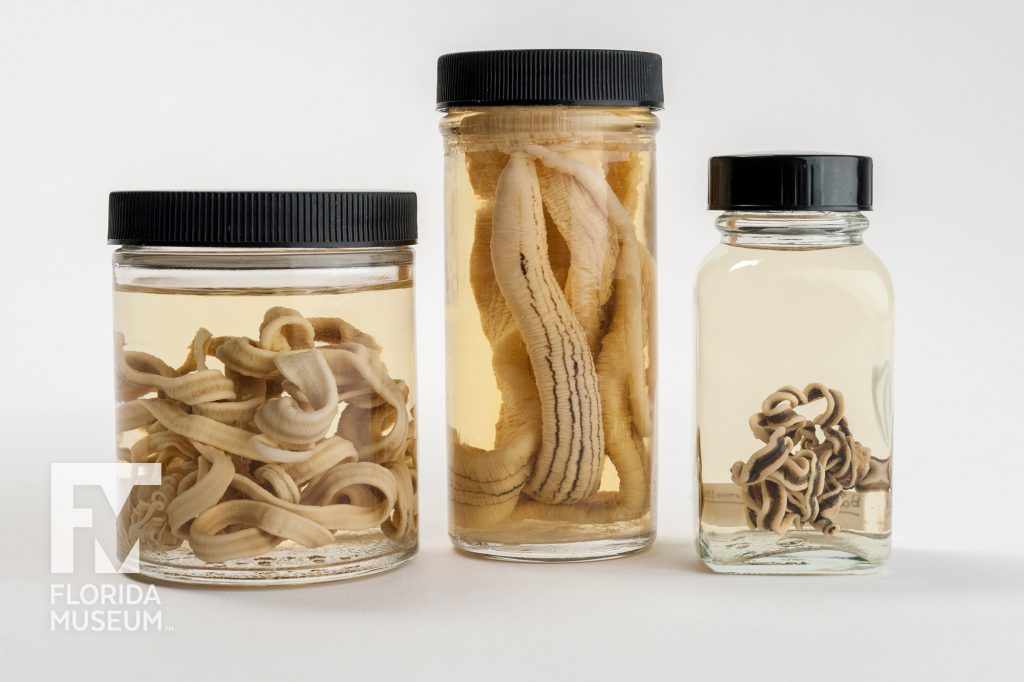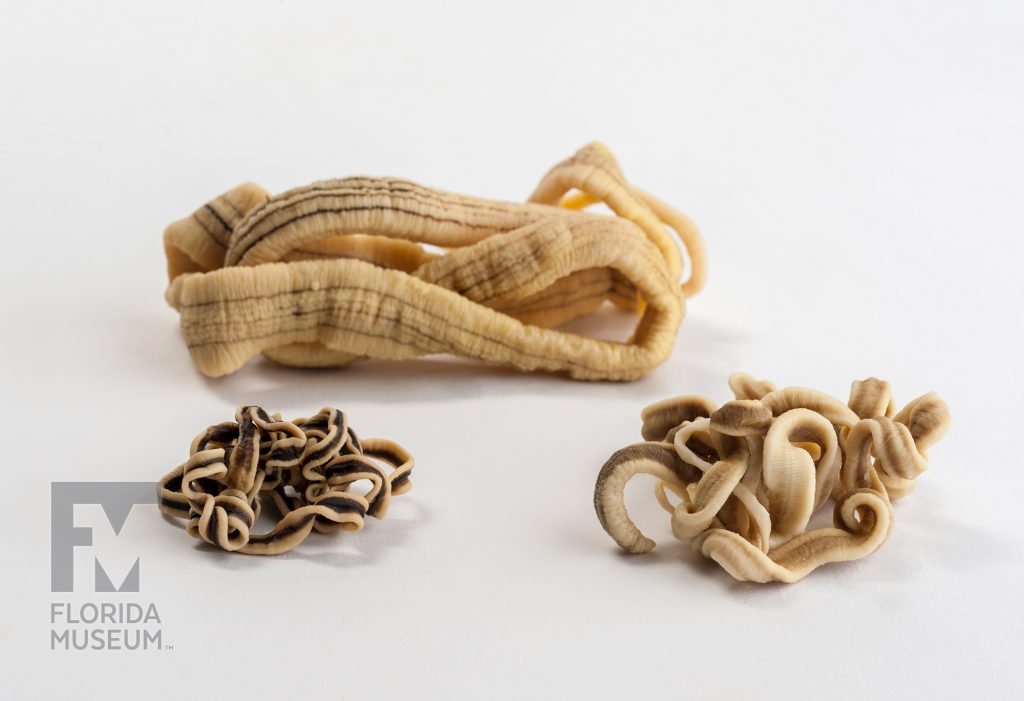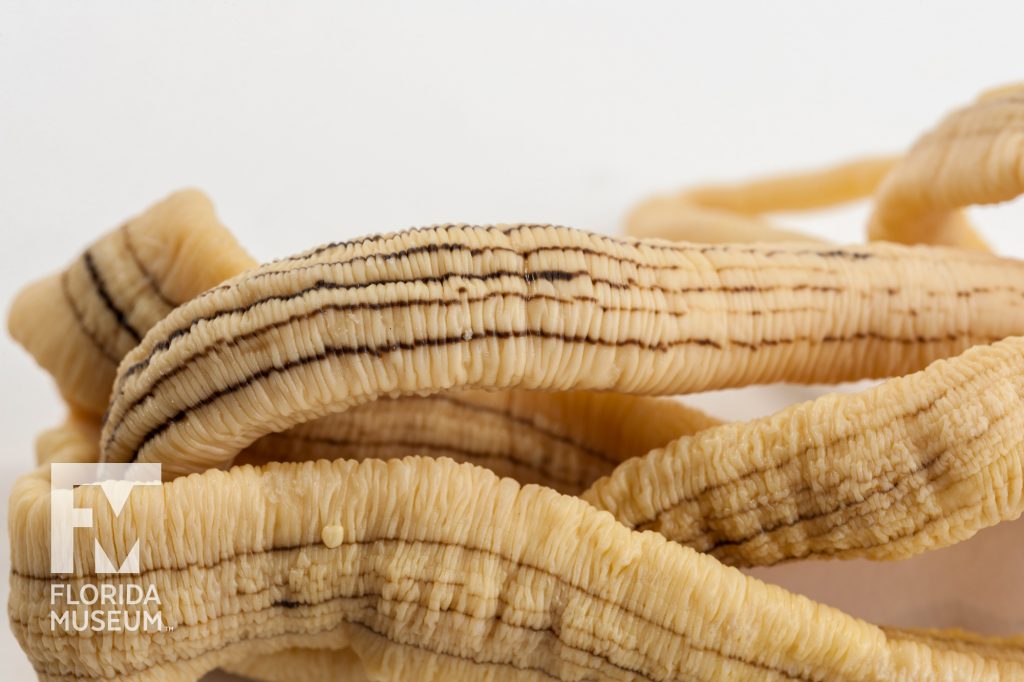Ocean-dwelling Ribbon Worms can grow longer than a blue whale, making them the world’s longest animal. These predators overwhelm their prey by shooting out a proboscis, a venomous spaghetti-like appendage that wraps around and kills prey.
Summary
Ribbon Worms
Baseodiscus quinquelineatus,
From Yanbu, Saudi Arabia, Sept. 2013
Baseodiscus hemprichii,
From Guam Island, Western Pacific, July 1975
Baseodiscus hemprichii,
From Guam Island, Western Pacific, Aug. 1994
Collection
Story
Ribbon worms, or nemerteans, are a group of very unusual worms related to mollusks and annelids. Most ribbon worms live in the ocean, and some can grow to over 100 feet long, but are usually much less than an inch wide. Some species live on land or in freshwater.
Unlike annelids, ribbon worms are not segmented. Instead, ribbon worms look a little like living linguine noodles, but are often very beautiful, with bright colors or stripes. They can stretch and contract their soft bodies, and they move by gliding over the bottom using slime and tiny hairs called cilia.
Despite their soft, delicate appearance, ribbon worms are fearsome predators of annelid worms, clams, crabs and even fish. Ribbon worms feed using a proboscis which is kept tucked inside their bodies when not needed. When some species of ribbon worms encounter prey, they push the proboscis out and stab the prey with a barb to inject toxins and digestive juices. Once the animal is immobilized, the ribbon worm swallows its prey whole, and they can eat animals almost as big as they are by stretching their bodies to fit the animal inside. Other ribbon worms have a branched, spaghetti-like proboscis instead of a barb, and secrete toxins onto captured prey. Sometimes, ribbon worms digest their prey outside their bodies and slurp up the soft tissue through their proboscis. Other ribbon worms are scavengers or parasites, and a few are thought to absorb nutrients through their skin.
Because of their voracious appetites, ribbon worms can have huge impacts on commercially important clam and crab fisheries. Ribbon worms protect themselves from predators by secreting toxic slime, but some fish, crabs, seabirds and even other ribbon worms eat them. There are over 1,000 species of nemerteans all over the world.
Jenna Moore
Graduate Student, Invertebrate Zoology*
University of Florida
Read by:
Mandy Bemis
Assistant Collection Manager, Invertebrate Zoology*
Florida Museum of Natural History
Exhibit
On display Sept. 23, 2017-Jan. 7, 2018, Rare, Beautiful & Fascinating: 100 Years @FloridaMuseum celebrated the Museum’s rich history. Each Museum collection was asked to contribute its most interesting items and share the stories that make them special. Though the physical exhibit is closed, this companion website remains online, providing an opportunity to experience the Florida Museum’s most treasured specimens.
Exhibit Area: Objects Tell Stories
Theme: Surprising Biodiversity
 Want to see more? Explore more than 300 breathtaking color photos of plants, animals, fossils and cultural heritage materials from the Florida Museum of Natural History’s collections in the award-winning book All Things Beautiful available from the University Press of Florida.
Want to see more? Explore more than 300 breathtaking color photos of plants, animals, fossils and cultural heritage materials from the Florida Museum of Natural History’s collections in the award-winning book All Things Beautiful available from the University Press of Florida.
*This title was accurate at the time the exhibit was on display in 2017. Please visit the collection website to verify current staff and student information.


